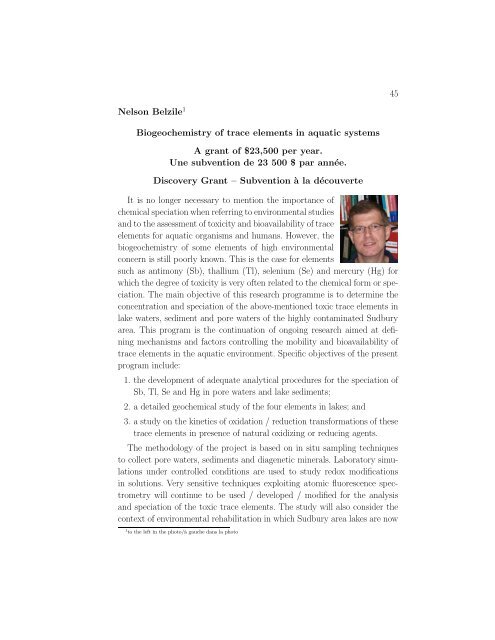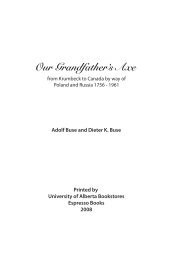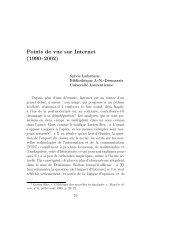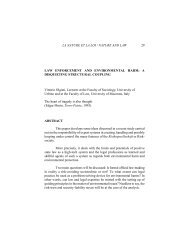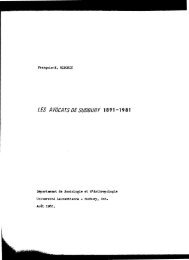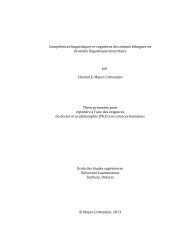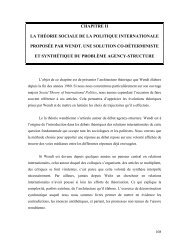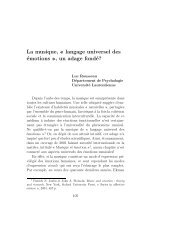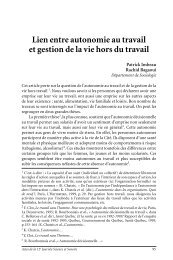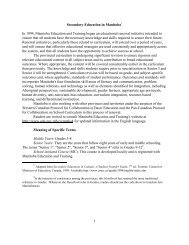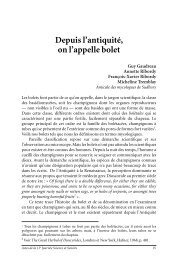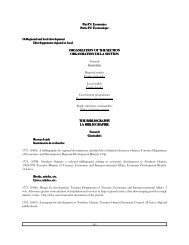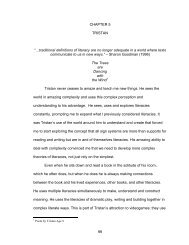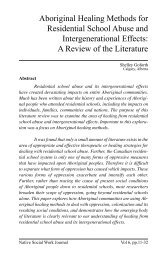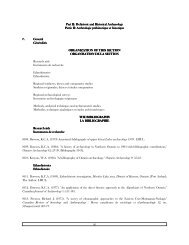NSERC grants at Laurentian University Subventions du CRSNG `a l ...
NSERC grants at Laurentian University Subventions du CRSNG `a l ...
NSERC grants at Laurentian University Subventions du CRSNG `a l ...
- No tags were found...
Create successful ePaper yourself
Turn your PDF publications into a flip-book with our unique Google optimized e-Paper software.
45Nelson Belzile 1Biogeochemistry of trace elements in aqu<strong>at</strong>ic systemsA grant of $23,500 per year.Une subvention de 23 500 $ par année.Discovery Grant – Subvention à la découverteIt is no longer necessary to mention the importance ofchemical speci<strong>at</strong>ion when referring to environmental studiesand to the assessment of toxicity and bioavailability of traceelements for aqu<strong>at</strong>ic organisms and humans. However, thebiogeochemistry of some elements of high environmentalconcern is still poorly known. This is the case for elementssuch as antimony (Sb), thallium (Tl), selenium (Se) and mercury (Hg) forwhich the degree of toxicity is very often rel<strong>at</strong>ed to the chemical form or speci<strong>at</strong>ion.The main objective of this research programme is to determine theconcentr<strong>at</strong>ion and speci<strong>at</strong>ion of the above-mentioned toxic trace elements inlake w<strong>at</strong>ers, sediment and pore w<strong>at</strong>ers of the highly contamin<strong>at</strong>ed Sudburyarea. This program is the continu<strong>at</strong>ion of ongoing research aimed <strong>at</strong> definingmechanisms and factors controlling the mobility and bioavailability oftrace elements in the aqu<strong>at</strong>ic environment. Specific objectives of the presentprogram include:1. the development of adequ<strong>at</strong>e analytical proce<strong>du</strong>res for the speci<strong>at</strong>ion ofSb, Tl, Se and Hg in pore w<strong>at</strong>ers and lake sediments;2. a detailed geochemical study of the four elements in lakes; and3. a study on the kinetics of oxid<strong>at</strong>ion / re<strong>du</strong>ction transform<strong>at</strong>ions of thesetrace elements in presence of n<strong>at</strong>ural oxidizing or re<strong>du</strong>cing agents.The methodology of the project is based on in situ sampling techniquesto collect pore w<strong>at</strong>ers, sediments and diagenetic minerals. Labor<strong>at</strong>ory simul<strong>at</strong>ionsunder controlled conditions are used to study redox modific<strong>at</strong>ionsin solutions. Very sensitive techniques exploiting <strong>at</strong>omic fluorescence spectrometrywill continue to be used / developed / modified for the analysisand speci<strong>at</strong>ion of the toxic trace elements. The study will also consider thecontext of environmental rehabilit<strong>at</strong>ion in which Sudbury area lakes are now1 to the left in the photo/à gauche dans la photo


